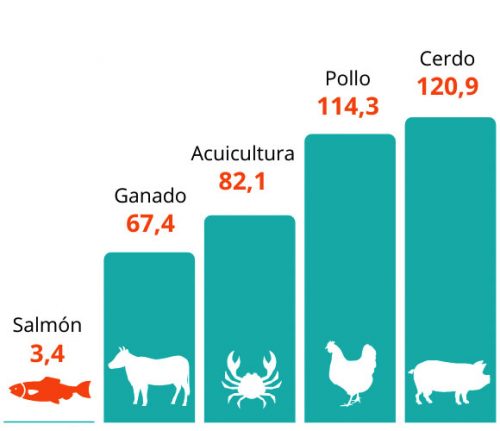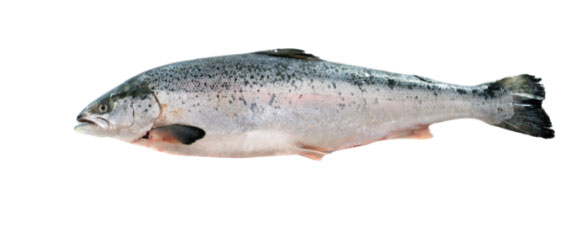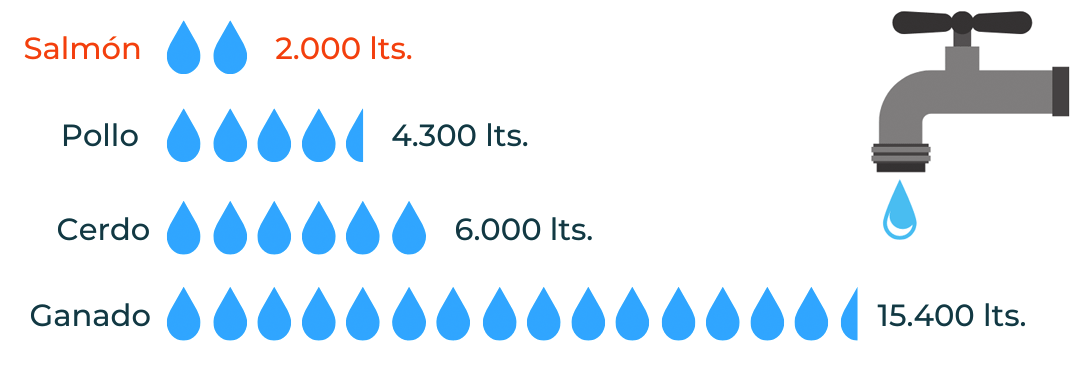Beneficios del Salmón
Producción Mundial


Huella de Carbono

Consumo de agua

Retención de proteínas
- Salmón 28%
- Pollo 37%
- Cerdo 21%
- Ganado 14%
Porción comestible

Fuentes:
Reporte de sustentabilidad del Global Salmón Initiative, disponible en: https://globalsalmoninitiative.org/es/reporte-de-sustentabilidad/hechos-sobre-la-produccion-de-proteinas/#produccion-mundial
Food and Agricultural Organization (FAO) of the United Nations Statistical Division – FAOSTAT
FAO of the United Nations Fisheries and Aquaculture Department – Fishery Statistical Collections
Reporte de sustentabilidad del Global Salmón Initiative, disponible en: https://globalsalmoninitiative.org/es/reporte-de-sustentabilidad/hechos-sobre-la-produccion-de-proteinas/#produccion-mundial
Hilborn, R., Banobi, J., Hall, S. J., Pucylowski, T., & Walsworth, T. E. (2018). The environmental cost of animal source foods. Frontiers in Ecology and the Environment, 16(6), 329-335.
Reporte de sustentabilidad del Global Salmón Initiative, disponible en: https://globalsalmoninitiative.org/es/reporte-de-sustentabilidad/hechos-sobre-la-produccion-de-proteinas/#produccion-mundial
Fry, J. P., Mailloux, N. A., Love, D. C., Milli, M. C., & Cao, L. (2018). Feed conversion efficiency in aquaculture: do we measure it correctly?. Environmental Research Letters, 13(2), 024017.
Nijdam, D., Rood, T., & Westhoek, H. (2012). The price of protein: Review of land use and carbon footprints from life cycle assessments of animal food products and their substitutes. Food policy, 37(6), 760-770.
Mowi (2020), Salmon Farming Industry Hanbook.
Mekonnen, M. M., & Hoekstra, A. Y. (2010). The green, blue and grey water footprint of farm animals and animal products. Volume 2: Appendices.

